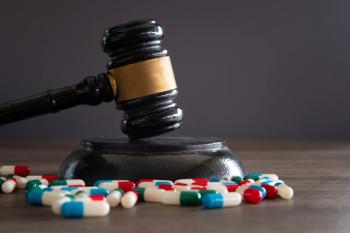
- Drug Topics March 2022
- Volume 166
- Issue 03
When Perfect is the Enemy of Good
While volunteering at a COVID-19 vaccine clinic, our columnist learned about the benefit of lightening up.
We pharmacists are indeed a meticulous bunch, striving for perfection because we must be perfect. I gave a presentation once where I shared that, for pharmacists, 99.9% is not good enough. In my 40-year career, I have worked 7680 days.If on average I filled 200 prescriptions per day, that would be a total of 1,536,000 prescriptions in my 4 decades. If I had an accuracy rate of 99.9%, that would be 1536 errors—a number to keep any pharmacist awake at night!
We community pharmacists are loners, usually the only one on the bench for a period of time. So it was with great delight when I got tapped to help my wife Denise with her massive COVID-19 vaccination effort in State College, Pennsylvania. I stood back in amazement watching my “lab partner” take, with minute-to-minute precision, the vaccine from the dry ice, then to the refrigerator with digital data logger, then to the clinic site with prescribed hard-side cooler and digital data logger, where 2400 patients would be immunized. With stopwatch accuracy, she would chart when the vaccine was pulled from the refrigerator, then taken to the drawing room, where syringes were filled to exactly 0.3 ml after dilution with exactly 1.8 ml of saline. The syringes were put into a labeled bag and checked for accuracy and bubbles. The time was then written on the bag, to the exact minute.
At 1 point, the 2 pharmacists in the room were discussing the use of a 3-ml syringe to draw up 0.5-ml doses of the other vaccine. We learned during our first lab in pharmacy school that the minimum measurable quantity of any vessel was 20%: a 100-ml graduate should never be used to measure less than 20 ml; a 25-ml graduate never less than 5 ml, and, therefore a 3-ml syringe should never measure less than 0.6 ml. But the government had sent these 3-ml syringes to do just that: measure 0.5 ml. Beside me in the drawing room were several dentists, physicians, and nurses. One of these brilliant young physicians was Dr Mark Stephens, who works for Penn State Medicine. Stephens has a military background. He’s tall, muscular, and very personable. Hearing our discussion, Stephens replied in a way I won’t soon forget: “For crying in the bucket, we’re in the middle of a pandemic.”
At the last clinic, we were busy pulling up booster doses that were 0.25 ml. Lo and behold, we were given U-100 insulin syringes marked in units! Come on, ref…throw the yellow flag! Insulin syringes are never to be used to measure anything but insulin! TB syringes are never to be used to measure insulin; this is a mortal sin in pharmacy practice. But Stephens just smiled again and said, “For crying in the bucket, we’re in the middle of a pandemic.”
After reconstitution, the Pfizer vaccine does produce some bubbles that can coalesce into a visible bubble. Pharmacists are concerned with potential dosing inaccuracies, and again we hear it: “For crying in the bucket, we are in the middle of a pandemic.”
I’m not here to tell my fellow pharmacists to aim lower. In fact, in some cases aiming lower could produce tragic results. Over the course of our 8-, 10-, or 12-hour days, we are required to be perfect. Dispensing 119 tablets of hydrocodone in a prescription order that calls for 120 tablets is never good enough!
But sometimes in our day-to-day work, we need to lighten up on the rigorous rules we were indoctrinated with. Stephens has also been known to quote Voltaire, reminding us that “Perfect is the enemy of good.” But my favorite quote of his goes back to his military days: “Sometimes, health care is like throwing hand grenades. Getting close is good enough to get the job done.” Lighten up, fellow pharmacists—we are doing one heck of a great job!
Peter A. Kreckel, RPh, practices community pharmacy in Lemont Furnace, Pennsylvania.
Articles in this issue
almost 4 years ago
Counseling Pearls: Allergic Asthma Treatmentalmost 4 years ago
Is Automated Prescription Pickup the Future of Pharmacy?almost 4 years ago
Managing Chronic Kidney Disease in Patients With Diabetesalmost 4 years ago
Cost, Culture Affect Access to Autoimmune Disease Carealmost 4 years ago
Black Market Boom: Protecting Pharmacy Data from Cybercrimealmost 4 years ago
OTC Review: Treatment Options for Osteoarthritisalmost 4 years ago
mRNA Vaccine Technology Updatealmost 4 years ago
mRNA Technology Leads to Advances in HIV Vaccine Candidatealmost 4 years ago
Prescribing Transparency as the Solution to Pharmacy Owner Woesalmost 4 years ago
Molnupiravir: Oral Antiviral for the Treatment of COVID-19Newsletter
Pharmacy practice is always changing. Stay ahead of the curve with the Drug Topics newsletter and get the latest drug information, industry trends, and patient care tips.


















































































































